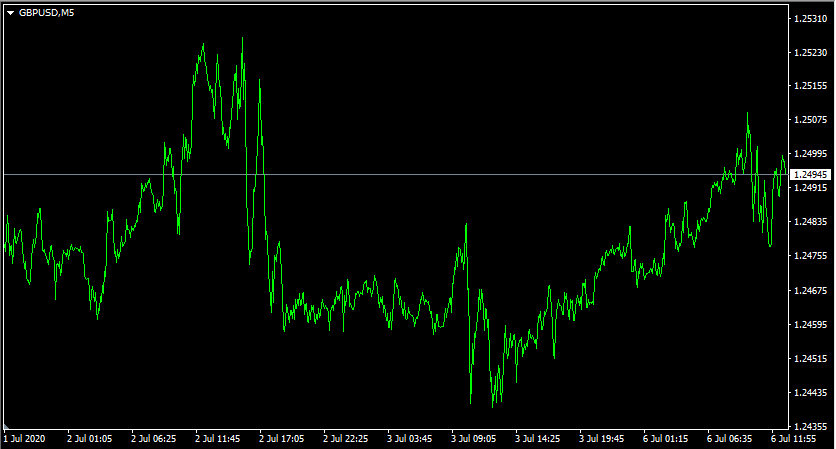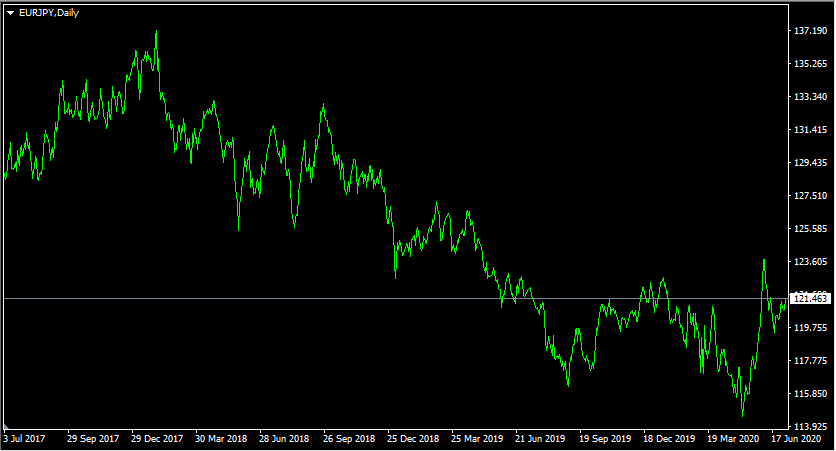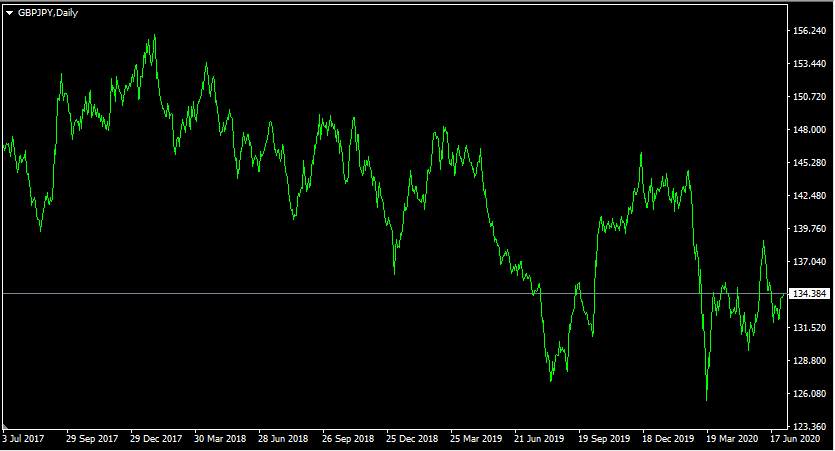Forex Risk Management Strategies
Here is a list of risk management tips Forex traders should be aware of:
- Avoiding the use of high unnecessary leverage
- Not committing more than 2% of trading capital for a single trade
- Only investing the amount one can afford to lose
- Utilizing stop-loss order or trailing stop orders
- Using a trading journal
- Choosing a proper risk-reward ratio, depending on the strategy
- Avoiding Trading Currencies with High Correlation
Let us go through each of those risk management Forex strategies in greater detail.
Avoiding Use of Unnecessary High Leverage
One of the most common mistakes new traders make when they first start trading in Forex is to use unnecessarily very high
leverage. This can be potentially very risky. For example, with 400:1 it only takes a 0.25% swing against a trade for the entire position to be wiped out. In this case the market participant losses the entire investment.
Here it is worth mentioning that in some countries the maximum amount of leverage is regulated by the law. For example, according to the United States regulations, for major currencies, the maximum ratio of leverage is set at 50:1. In the European Union, this limit is set at 30:1.
It goes without saying that opening trading with 50:1 leverage is much less risky than with 400:1 leverage. However, this does not imply that traders are guaranteed to preserve their trading capital if they limit their use of leverage with 50:1 leverage. In this case, it can take 2% market swing against the trader’s position, for it to close down. Even if the move was of a smaller scale, it can still have a significant impact on the trader’s account.
To illustrate this argument better let us take a look at this 5-minute GBP/USD chart:

As we can see from the image, the GBP/USD has recently gone through plenty of fluctuations. At first, the pair gained some ground, rising from $1.2484 to $1.2527. Now let us suppose that at this point, after thorough analysis some traders have decided to invest $1,000 for a long GBP/USD position at 50:1 leverage. Despite its recent short term uptrend, there was a reversal and the pair dropped all the way down to $1.2439. This means that in percentage terms this decline was the equivalent of 0.7%.
With 50:1 leverage this means that traders would have lost 35% of their money, which is $350 from the $1,000 originally invested amount. Therefore, traders must be able to take those risks into account and avoid using unnecessarily high amounts of leverage.
Not Committing more than 2% of Trading Capital for a Single Trade
When it comes to risk management Forex trading participants must be aware of the potential dangers with investing a large portion of their trading capital in a single trade. Returning to our previous example with GBP/USD’s decline of 0.7%. Let us consider two separate scenarios.
In the first case, let us suppose that an individual opens a long GBP/USD position with the entire trading capital worth $10,000 at 50:1 leverage. As the pair dropped by 0.7%, the market participants would have lost $3,500, which is more than 1/3 of his or her entire trading capital. It goes without saying that recovering from such a heavy loss is a difficult task. In fact, with $6,500 remaining on the balance, the trader needs to gain around 54% just to break even and return to $10,000.
In the second scenario, an individual opens a long GBP/USD position with $200, which is just 2% of his or her entire trading capital of $10,000. As security fell by 0.7%, the trader would lose $70. This brings the total balance only down to $9,930. In this case, an individual needs only to increase his or her trading account by approximately 0.7% in order to return back to $10,000.
As we can see from the above the differences between those two scenarios are significant. In the first case, the trader lost 35% of trading capital, while in the second case this loss was only equivalent to 0.7%. This is exactly why some experienced professional traders recommend not to commit more than 2% of one's trading capital to a single trade.
Only Investing Amount One Can Afford to Lose
Another important Forex risk management tips are the following principles: traders should not risk the amount they can not afford to lose. They also should have some amount set aside for a day to day life necessities.
The observance of those principles does have some notable benefits. Firstly, if traders invest their rent or grocery money on the trading account, they are much more likely to get emotional over the potential winnings and losses and consequently make poor decisions.
This can be damaging not only for the trading experience but also for personal finances as well. When traders have enough money on savings accounts to manage the day to day necessities and emergencies, they are more likely to remain calm and keep their emotions under control.
This approach does have a second advantage as well. When a trader loses a large portion of his savings in trading, more than he or she can afford to lose, it can be very demoralizing. Then it is more than likely that at this point he or she will just give up and quit trading. On the other hand, if the number of losses is small and reasonable, then it is much more likely that traders can retain their motivation and learn from their mistakes in the process.
Utilizing Stop-Loss Orders and Trailing Stop Orders
Each trader has his or her own approach to trading. Some of them treat it as a full-time job, spending 8-9 hours in front of the screen. While for other market participants, this can only be as a hobby, only devoting half an hour per day. Obviously, there is also plenty of ground in the middle of those two extremes.
However in any case, here it is worth remembering that the Forex market is open for 24 hours from Monday to Friday. So no matter a trading style, monitoring opened positions for 24 hours a day is not a sustainable trading strategy. Yet there is always a chance that during the time when the trader is not in front of the screen, some large move might take place, inflicting serious losses to the trading account.
One of the effective ways of managing Forex risk is to make use of Stop-loss and trailing stop orders. Here traders can specify the level at which the position will be automatically closed. This lets the market participants cut their potential losses if the market goes to the opposite direction of their positions. As a result, this method can ensure the security of the trading account at all times.
However, before moving on to another subject, it is worth mentioning that stop-loss orders can have one downside. The fact of the matter is that in case of great volatility, the brokerage company might not be able to close the position at the specified price. As a consequence, the actual loss to the trader might be slightly higher than originally anticipated.
However, for the sake of accuracy, it is worth mentioning that such occurrences are quite rare. Such an elevated degree of volatility is mostly a result of the central bank interest rate decision, some major economic announcement, or other significant events.
Using Trading Journal
Keeping a trading journal on a daily basis can be a rather boring task for some traders. However, it can certainly have some notable benefits. Firstly, this gives market participants the ability to keep track of their overall progress. They can compare their current results with that of the previous month.
As a result, a trader can analyze whether he or she is making progress. For example, if the total amount of monthly losses comes down, this means that a trader is improving his or her results.
The second benefit of this approach is that this gives a trader an ability to learn from past mistakes. With a trading journal, he or she can always check the specifics of previously opened positions and which of them turned out to be profitable.
So essentially, the trading journal can be a useful tool for learning and can certainly help traders to improve upon their performance in the long term.
Choosing Proper Risk-Reward Ratio, Depending on Strategy
Another essential element for proper risk management is to choose a proper
risk and reward ratio. Now in general, the majority of professional Forex traders believe that a market participant does need to maintain at least more than 50% winning trades in order to avoid a net loss over a long period of time.
This assumption tends to be true with the majority of traders. However, market participants can certainly improve their winning odds, by setting a risk to reward and ratio at 2:1 or higher. This means that if a trader aims to gain 100 pips from a given trade, then it might be a useful idea to set the stop-loss order below the current price.
For example, if a trader retains a 2:1 risk to reward ratio, then he or she only needs to come up with 34% of winning trades in order to earn some payouts by the end of the month, instead of 51% with the 1:1 ratio.
Obviously this method, just like any other Forex strategy can not guarantee that a trader will be successful 100% of the time. Market participants still need to conduct a thorough fundamental and technical analysis before committing to opening a trading position. However, in general, having a proper risk/reward ratio can certainly go a long way in improving the trader’s chance of long term success.
Avoiding Trading Currency with Pairs with High Correlation
One thing traders need to keep in mind is the fact that some currency pairs are highly positively correlated with each other. Consequently, by opening the same positions with those kinds of pairs, traders are not reducing, but increasing their risk exposure.
For the purpose of better illustration, let us take a look at this daily EUR/JPY chart:

As we can see from the chart above, the EUR/JPY has been through 3 stages. Firstly the pair was in an uptrend from 128 mark in July 2017 to 137 level by February 2018. However, after this development, the pair settled into the long term downward trend. As a result, the pair fell to a multi-year low of 114 by March 2020. This was followed by a period of recovery, with the pair rising from 114 level to well above 121 handle at the beginning of July 2020.
Now, let us compare this diagram with the daily GBP/JPY chart:

As we can notice from the above chart, despite some initial setbacks, from July 2017 until February 2018, the GBP/JPY pair has made some steady gains, rising from 146 to 156 level. However, this upward trend was rather short-lived. From the following month, the pair entered into the long term downtrend.
In fact, the pound tried to rally and break out of this downward channel. However, the attempt eventually failed and the pair dropped to the all-time low of 125 level, during March 2020. During the subsequent months, the pound recovered and regained at least some of the recent losses, with GBP/JPY reaching 134 level.
So as we can see from the two charts above, EUR/JPY and GBP/JPY are highly positively correlated with each other. Obviously, this is not the case of the perfect correlation. There were some cases when there was a case of a certain degree of divergence. However, as a whole, those two pairs usually tend to move in the same direction.
Therefore if a trader decides to open 2 long or 2 short EUR/JPY and GBP/JPY positions, it will not be the case of diversification of the trading portfolio. Those experienced professional traders who know how to manage Forex risk, understand that opening positions with highly correlated currencies does increase the risk exposure for the trader.
For example, let us suppose that a trader opens long AUD/USD, AUD/JPY, and XAU/USD positions, investing in each trade 2% of trading capital. Now at first glance, some people might think that we are looking at a well-diversified portfolio. However, this is not the case. In fact, all those 3 pairs are highly positively correlated with each other. This means that they tend to move in the same direction. Therefore, in each case traders took positions on the same side of the trade. As a result, the trader risks 6% of his or her trading capital, instead of 2%.
Here it is also worth mentioning that this threat of higher risk exposure is not strictly confined to positively correlated currencies, but also to negatively correlated currency pairs as well. For example, let us suppose that a trader opens a long USD/JPY and short EUR/USD position. Here the risk exposure will be still high because those two currency pairs are negatively correlated with each other. So the trader essentially took the same side of the trade.
When it comes to this subject, it is worth noting that not all currency pairs are correlated by the same degree. In fact, this relationship is measured by the coefficient, ranging from -1.00 to 1.00. Here -1.00 denotes the perfect negative correlation, while 1.00 shows the case of perfect positive correlations.
So, therefore, if the coefficient of correlation of two given currency pairs is for example 0.10 or 0.40, then their relationship is not that significant. Therefore, traders can open positions with those currency pairs without increasing their risk exposure. On the other hand, if the coefficient is at 0.8 or 0.9 then this suggests that those two securities are highly correlated, and opening trades with those currencies can certainly increase the risk exposure.
This is why it is essential for traders to make sure to avoid opening positions for highly positively or negatively correlated currencies. It does not really provide any sort of reasonable diversification of trading portfolio and increased risks, associated with trading significantly.